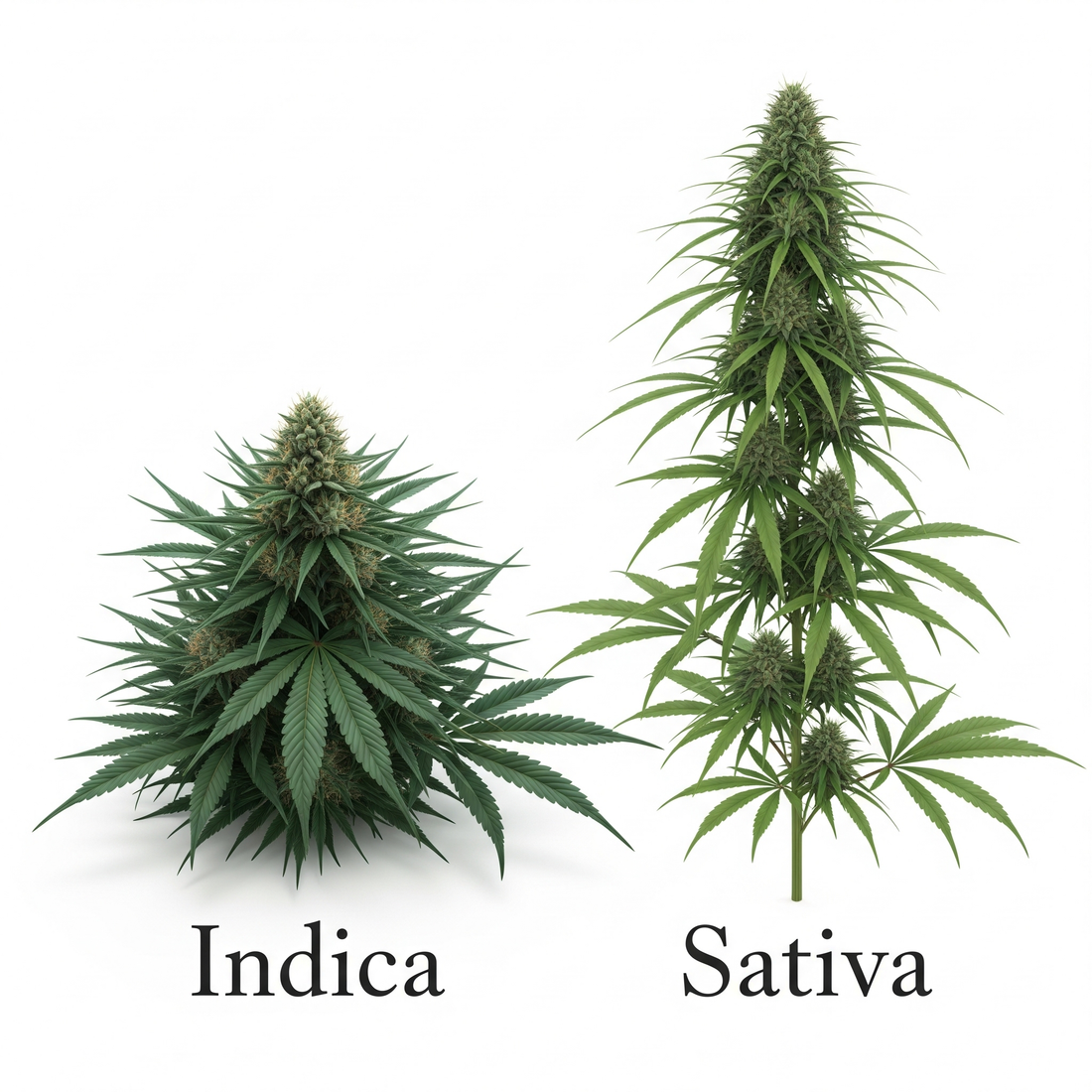
Indica or Sativa: What's the Difference and Where Did They Come From?
Share
Indica or Sativa: What's the Difference and Where Did They Come From?
For newcomers and seasoned enthusiasts alike, the terms "Indica" and "Sativa" are often the first introduction to the diverse world of cannabis. But what do these classifications truly mean, and where did they originate? At Kind Companion Hemp, we believe in empowering you with knowledge. Let's delve into the fascinating history and distinctions of these two well-known cannabis types.
The Origins: A Journey Through History
The classification of cannabis into Cannabis Sativa and Cannabis Indica dates back to the 18th century, primarily driven by European botanists observing distinct plant characteristics.
-
Cannabis Sativa: In 1753, Swedish botanist Carl Linnaeus first identified and named Cannabis Sativa. The term "sativa" comes from the Latin word "sativum," meaning "cultivated," reflecting its widespread cultivation in Europe for industrial purposes like fiber and seeds. These plants were typically tall with narrow leaves, well-suited for warmer climates and longer growing seasons.
-
Cannabis Indica: A few decades later, in 1785, French naturalist Jean-Baptiste Lamarck identified a second species, which he named Cannabis Indica. He based his description on specimens collected in India, noting their intoxicating properties and distinct physical traits compared to the European Sativa. "Indica" literally means "from India." These plants were observed to be shorter, bushier, and had broader leaves, adapting to the harsher, drier climates of the Hindu Kush mountains in regions like Afghanistan, India, and Pakistan.
Initially, these classifications were purely botanical, based on morphology (physical appearance) and geographic origin.
Beyond the Buzz: Understanding the Differences
Traditionally, consumers have associated Indica and Sativa with distinct effects: Indica strains with relaxation and a "body high," often recommended for nighttime use, and Sativa strains with energizing and uplifting "mind highs," favored for daytime activities.
However, modern cannabis science reveals a more nuanced picture. While these anecdotal distinctions are deeply ingrained in cannabis culture, the reality is more complex:
-
Physical Characteristics:
-
Indica: Typically shorter and stockier plants with broad, chunky leaves. They tend to grow faster and produce more buds per plant.
-
Sativa: Generally taller and more slender plants with narrow, finger-like leaves. They take longer to mature.
-
-
Effects (The Modern Understanding): The commonly held belief that Indica always sedates and Sativa always stimulates is a simplification. The effects of a cannabis strain are primarily determined by its unique chemical profile, including:
-
Cannabinoids: Compounds like THC (tetrahydrocannabinol) and CBD (cannabidiol) are major contributors to effects. Sativa strains have historically been associated with higher THC and lower CBD, while Indica strains were thought to have more balanced ratios or higher CBD. However, extensive crossbreeding means this is no longer a reliable rule of thumb.
-
Terpenes: These aromatic compounds found in cannabis (and many other plants) are responsible for the plant's scent and flavor, and they also play a significant role in modulating its effects. Terpenes like Myrcene (often associated with relaxation) or Limonene (linked to uplifting effects) can be present in varying concentrations in any strain, regardless of its Sativa or Indica classification. This interaction of cannabinoids, terpenes, and other compounds is known as the "entourage effect," which is now considered a more accurate predictor of a strain's impact.
-
The Rise of Hybrids
Today, pure Indica or Sativa landrace strains (those that evolved naturally in their native environments) are rare. The vast majority of cannabis available on the market are hybrids—crossbred plants combining genetics from both Indica and Sativa varieties. Growers cultivate hybrids to achieve specific desired traits, such as unique cannabinoid and terpene profiles, faster growth cycles, or balanced effects.
Choosing Your Companion
Instead of relying solely on the Indica or Sativa label, we encourage you to explore the rich chemical composition of each strain. Pay attention to:
-
Cannabinoid Profile: Understand the THC, CBD, and other cannabinoid content.
-
Terpene Profile: Learn about the dominant terpenes and their potential effects.
-
Grower Information: Reputable sources will often provide detailed analyses of their strains.
At Kind Companion Hemp, we're dedicated to helping you find the perfect product for your needs. Understanding the origins and true nature of Indica and Sativa is the first step toward a more informed and personalized cannabis experience.
Check out some of our THCA FLOWER !
www.kindcompanionhemp.com
admin@kindcompanionhemp.com


